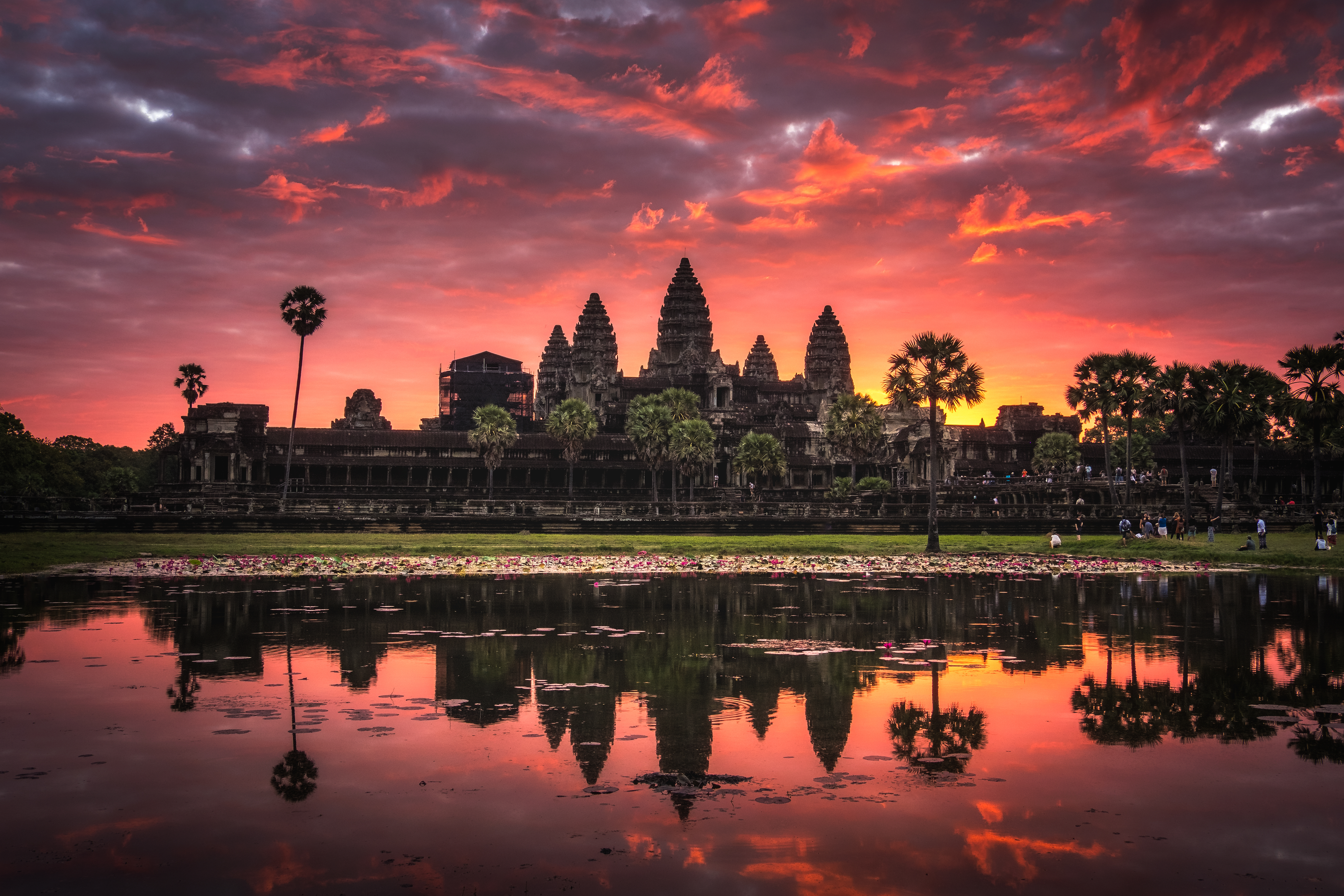Cambodia Adventure

Temple Highlights
Angkor Wat dates back to the first half of the 12th century. King Suryavarman II constructed this magnificent masterpiece and built it to become the largest religious monument in the world. Its perfection in composition, balance, proportions, reliefs, and sculptures make it one of the finest in the world. This temple is an expression of Khmer art at its highest point of development. It took in its entirety roughly 30 years to construct Angkor Wat. Continue afterward to the former capital of the Angkor Kingdom, Angkor Thom, which translates to “Great City”. The city covers an area of 9km² in which numerous breathtaking monuments were built. The South Gate offers the grandest access to the city whereas the Victory Gate grants access on the East side, leaving the East Gate, which is also known as the Gate of the Death beautifully untouched in a very quiet part of the complex. The centerpiece of the city is the Bayon. Its most distinctive features are the 216 serene stone faces that seemingly face all directions. The Baphuon and Phimeanakas are structures built in the 11th and 10th centuries respectively and both were built in the pyramid style. The Terrace of the Elephants is a 300 meters long terrace that has three main platforms and two subsidiary ones. The south stairway is framed with three-head elephants gathering lotus flowers with their trunks. The central stairway is decorated by lions and garudas in bas-reliefs in a stance of support for the stairways. One of the main attractions of this terrace is the facade decorated with elephants and their riders depicted in profile. Likewise, the Terrace of Leper King was constructed in the 12th century. The curious name of this terrace refers to a statue of the Leper King that is on the platform of the terrace. Lunch can be enjoyed in between the visits and may be back at the hotel or at a local restaurant in the Angkor area. The remainder of the afternoon is dedicated to Ta Prohm, which is considered to be the most photographed temple within the Angkor complex. Constructed in the Bayon style between the late 12th and early 13th century, Ta Prohm was left pretty much untouched by archaeologists. The trees that grow out of the ruins allow for a mysterious feeling filled with photogenic opportunities. King Jayavarman VII constructed the temple as a Mahayana Buddhist monastery and university and it is estimated that close to 80.000 people resided at the temple.
